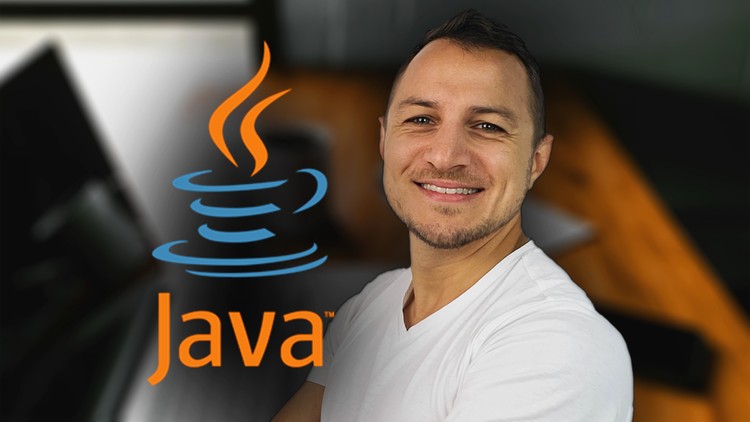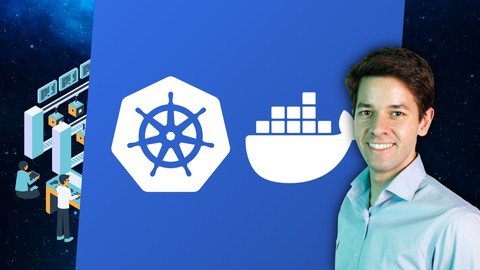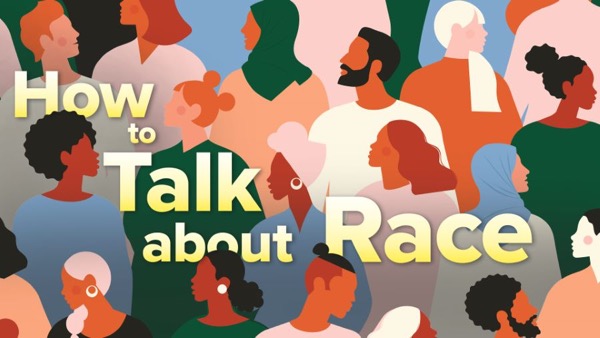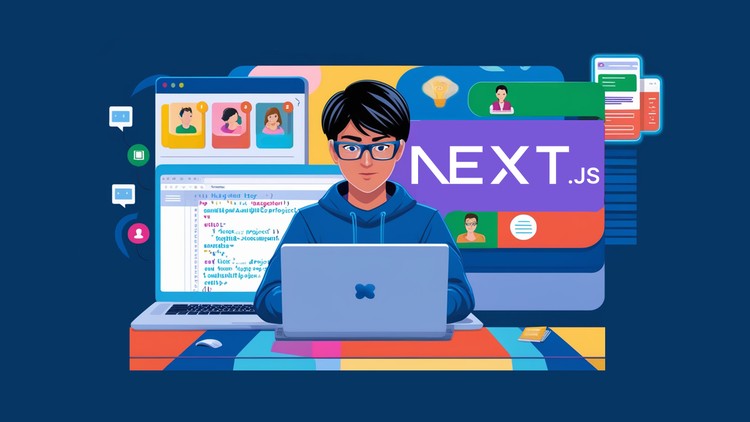
Full Digital Marketing Course: SEO, Paid Ad, GA4, GTM, Email
Published 10/2024
Created by Tanmoy Das
MP4 | Video: h264, 1280x720 | Audio: AAC, 44.1 KHz, 2 Ch
Genre: eLearning | Language: English | Duration: 573 Lectures ( 39h 8m ) | Size: 24.6 GB
Learn Everything in Digital Marketing - Paid Ads, SEO, Google Analytics 4, GTM, Email Marketing, Content Marketing w/AI
What you'll learn
SEO Fundamentals: Master the basics of Search Engine Optimization, including keyword research, on-page, off-page, and technical SEO, to boost organic search.
PPC Advertising: Gain hands-on experience with paid ads on Google and social media platforms, covering campaign setup, targeting, bidding, and budget management
Email Marketing Essentials: Develop email campaigns that build customer relationships, drive engagement, and increase conversions with best practices in segment
Google Analytics 4 (GA4) Mastery: Analyze and interpret user data, set up key performance indicators (KPIs), and make data-driven marketing decisions with GA4.
Google Tag Manager (GTM) Setup and Usage: Explore GTM for efficient tracking, custom event creation, and conversion tracking without the need for coding.
Content Marketing Strategy: Learn to craft effective content strategies that engage audiences and drive conversions across various digital platforms.
Audience Targeting and Segmentation: Understand how to define, reach, and convert the right audiences using different targeting methods across channels.
Marketing Analytics & Reporting: Create detailed reports to showcase campaign performance, ROI, and actionable insights for continuous improvement.
Current Trends and Best Practices: Stay updated on the latest trends in digital marketing, including AI-driven tools, content formats, and algorithm updates.
Campaign Optimization: Learn to analyze campaign performance metrics, identify trends, and optimize ads and content for improved results.
Requirements
NO digital marketing experience is required!
Description
Hi Guys,Welcome to my Full Digital Marketing Course: SEO, Paid Ads, GA4, GTM, Email Marketing & Content Marketing with AI Course!In my course you will learn everything about Digital Marketing. I have created video lessons on every topic and feature of Digital Marketing. You will get to see the real practical implementation of how to create each and every campaign and how to use every feature of this product.This is the most detailed course on Digital Marketing you will ever find on the internet. I have created different sections based on different topics of Digital Marketing and in each section, I have gone in-depth into explaining the concept of each feature and how to practically implement it.This course will give you a 100% understanding of Digital Marketing and after going through this course you will be capable of applying these concepts in building your own online business or handling Digital Marketing of your clients. At such a low price, you're going to get 572 detailed video lessons, 57 assignments, 2 quizzes, 2 practice tests & 7 digital download resources. A complete access to our student discussion forum, and the ability to ask me any questions you may have as you progress through the course.On top of all that, you get lifetime access and a 30 day, 100% money back guarantee!Complete Paid AdsTopics you will learn in this part:- Google Ads Overview - Keyword Research- Google Ads Formats- Google Ads Bidding Strategies- Google Display Network- Google Conversion Tracking- Google Ads Remarketing- Google Video Ads- Google Ads Certification- Facebook Marketing- Facebook Ads Basics- Facebook Ads Campaign Creation- Facebook Pixel Setup- Facebook Ads Bidding Strategies- Facebook Ads Custom Audiences- Facebook Ads Lead Gen Campaign- Facebook Ads Sales Campaign- Facebook Ads Certification- Microsoft Ads Overview- Introduction to Keywords- Microsoft Ads Formats + Extensions- Microsoft Ads Bidding Strategies- Microsoft Ads Audience Network- Microsoft Ads UET Tag Setup- Microsoft Ads Remarketing- Microsoft Shopping Ads- Microsoft Ads Mobile App Campaign- Microsoft Ads Shared Library- Microsoft Ads Certification- LinkedIn Ads Overview- LinkedIn Ads Formats- LinkedIn Ads Bidding Strategies- LinkedIn Ads Audience Templates- LinkedIn Ads Conversion Tracking- LinkedIn Ads Retargeting- LinkedIn Ads Lead Gen Campaign- LinkedIn Ads Dynamic Ad Campaign - LinkedIn Ads Carousel Image Ad Campaign - LinkedIn Ads Conversation Ad Campaign- LinkedIn Ads Document Ad Campaign- LinkedIn Ads LinkedIn Video Ad Campaign- LinkedIn Ads Event Ad Campaign- LinkedIn Ads Direct Sponsored Content Single Image Ad Campaign- How to use Reports in LinkedIn Ads- LinkedIn Ads Billing Center- LinkedIn Ads Business Manager - LinkedIn Ads CertificationThe Ultimate SEO GuideTopics you will learn in this part:- SEO The Basics - What is SEO And why is it important?, Debunking SEO Myths, Onpage/Offpage SEO Introduction- Keyword Research - Understanding Keywords, Short Tail Vs Long Tail Keywords, Google Keyword Planner Tool, SEMRush - Keyword Research, Mozbar Extension, SEMRush - Competitor Keywords, Google Auto Suggest, Google Trends- Content Creation - Content In SEO, Different Content Generation Ideas, Content Length- Onpage SEO - What is Onpage SEO, Onpage SEO Factors, Image ALT Tag for SEO, Internal Linking- Offpage SEO - Backlinks, Anchor Text, Dofollow Vs Nofollow Links, Link Building Strategies- Technical SEO - HTTP Vs HTTPS, Google Search Console, Google Analytics, XML Sitemap, Duplicate Content, What is a 404 Page, What is a 301 Redirect, Keyword Cannibalization, Schema MarkUp - Speeding Up Your Wordpress Website - Test Website Speed, Web Hosting and Servers, Speeding Up Wordpress website strategies- User Experience - What is UX, User Metrics that affect SEO Rankings- Negative SEO - What is Negative SEO, Negative SEO Tactics, How to protect website from Negative SEO- Google Algorithm Updates - Google Panda, Google Penguin, Google Hummingbird- Measure Your Progress - Keep track of Backlinks, Track Website Visits, Track traffic from different countries, What pages on your website are most popular- Leveling Up Your SEO Knowledge - Topical Relevancy, Tiered Link Building, Google AI & Machine Learning- Manual SEO Audits - What Is An SEO Audit, SEO Audit Tools, URLs + 404 Pages + Optimized URLs, Page Titles, Meta Descriptions, Heading Tags (H1 & H2s)- Competitor Research - Competitors- URL Structure for SEO - Keywords in Domain, URL Folder and Page Names Structures- Google Analytics for SEO - GA4 for SEO, Demo of GA4 + Custom Reports, How to Use Google Search Console and GA4 together- Google Search Console Tools - Tools to check Search Performance and Indexing- Finding & Removing Duplicate Content - Find Duplicate Content Pages, Get Rid of Bad Pages- How To Get .Edu Links From Universities- SEO Backlink Strategies- Link Building and Boosting SEO with Memes- Local Google SEO and Google Map RankingThe Ultimate Google Analytics 4 Topics you will learn in this part:- What is Google Analytics and Why Is It Important?- How To Set Up A Google Analytics Account & Install the Tracking Code- How To Upgrade Your Existing Google Analytics Account to GA4 - Resource- How To Install The Tracking Code On Shopify Wix Etc. - Resource- How To Prevent Inflating Your Traffic Data- How To Access The Demo Content- Google Analytics Dashboard Walkthrough- How To Find Out How Much Traffic Your Website Gets- How To Find Out What Country Your Traffic Is Coming From- How To Find Out What Pages Are The Most Popular On Your Website- Learn Who Your Visitors Are - Demographics Reports- How To Find Out What Sources & Channels Send You The Highest Quality Traffic- Real Time Reports - How To Measure Marketing Performances Live- Analyzing DAU, WAU and MAU- Events and Conversions- How To Track Form Submissions- How To Track Results From Specific Marketing Activities- Browser's Language- Location Data- Browser's Conversion Rate- Device Category- Screen Resolution- Page Speed Insights- Mobile Operating System- Landing Pages- Paid Traffic And Landing Pages- Site Search Data- Lets Analyze Beginner Traffic Data- Where are Your Users Coming From- Demographics Of Your Target Audience- Devices and Technology of Your Visitors- Finding Useful Details About the User- Identifying Overlapping Segments Of Your Visitors- Page-Level Analysis of Your Website- Cohort Analysis - Granular Analysis- More Data on Business Goals- Business Goal Analysis With Monetization Reports- Revisiting the Monetization Reports- Customized Tabular Reports In GA4- Google Looker Studios Basics- Create a New Google Analytics 4 Account- Connect Google Analytics 4 to the Website- Create a New Google Tag Manager Account- Link The Website, Google Analytics 4 and Google Tag Manager- Acquisition Reports- Campaign Tracking- Campaign URL Builder- Engagement Reports- Retention Reports- GA4 Explore Overview- Exploration AnalysisComplete Google Tag Manager GuideTopics you will learn in this part:- What is Google Tag Manager and Why Do You Need it- Useful Chrome Plugins For Working With Google Tag Manager- Create a Google Tag Manager Account- The Overview of 5 Google Tag Manager Installation Methods- Setup Google Tag Manager on Wix- Setup Google Tag Manager on Wordpress- Setup Google Tag Manager on Shopify- Setup Google Tag Manager on Squarespace- Inject Google Tag Manager Container to any Website- GTM Interface Overview- Best Practices & Considerations- Naming Conventions- Google Analytics 4 Setup & Publishing The First Version- Google Ads Remarketing Setup- Testing & Debugging Before Publishing a New Version- Facebook Pixel Setup- Copy Tag and Export Container- Troubleshooting Problems You Might Encounter- Time Triggered Tags Part 1: Custom Facebook Events For Remarketing- Time Triggered Tags Part 2: Time on Site With Google Events- Scroll Distance Tracking Part 1: The Basic- Scroll Distance Tracking Part 2: Time Triggered- Click Tracking Part 1: Outbound Links- Conversion Tracking Part 1: Simple Google Ads Conversion Tracking- Trigger Types in Google Tag Manager- Built in Variables- User-Defined Variables- Implementing GA4 Event Tag with GTM- Creating a Specific Page Trigger- Storing Measurement ID in User-Defined Variable- Tracking Clicks & Sending to GA4- Adding Details about Clicks and Sending to GA4 Events- Track Button Clicks in GA4 via GTM- Capture JavaScript Errors with GTM and Send to GA4- Tracking if users are viewing a particular section, image, banner etc.- Introduction to Data Layer- Using Data Layer with GTM- Pulling Values from Data Layers- Dynamic Data Addition in Data Layer and using custom event in GTM- Custom HTML Tag - Executing HTML and JavaScript- Share Containers - Export and Import GTM ContainersEmail MarketingTopics you will learn in this part:- Why Email Marketing Is Important For Your & Your Business- Creating Your Free MailerLite Account- Knowing The MailerLite Interface- First Step: Identify Your Customer's Needs- What Are The Strategies For Building Your Email List?- What is a Lead Magnet and How It Will Help To Grow Subscriptions Exponentially- Types of Lead Magnets and How To Choose The Best One For You- Best Practices When Creating A Lead Magnet- EBook - How to Create an irresistable Lead Magnet- Video Series - How to Create an Irrresistable Lead Magnet- PDF or Report - How to Create an Irrresistable Lead Magnet- Subscriber Management Overview on MailerLite- Creating Groups on MailerLite- Using Segments on MailerLite- Importing or Exporting subscribers on MailerLite- Remove inactive subscribers on MailerLite- What is a Landing Page- Creating an Irresistable Landing Page To Attract More Clients- Creating Subscription Forms In MailerLite- Adding a subscription form to your website- Introduction to Email Automation- Planning Your Email Sequence Like a Pro- Creating An Email Sequence in MailerLite for new customers- Activating and Testing your email automation- Analyzing your Campaign Data.- Anti- SPAM Policy. Keeping Your account healthy.- What Is A/B Testing And Why Is It Important?- How to Plan Your A/B Test Campaign- How to Create An A/B Text In MailerLite Step By Step- What 14 studies say about the best day to send email- The style you'll use in your emails- 10 ways to ensure your emails are mobile friendly.- Personalizing Your Email Content- How to Get Support from MailerLiteContent Marketing with AITopics you will learn in this part:- Welcome to the Content Marketing Course- What is Content Marketing & Why is it Important?- A Brief Overview of Content Formats & Platforms- How Does a Content Marketing Funnel work?- What is Your Brand's Purpose?- How to Position Your Brand?- What is Your Unique Selling Proposition?- Choose Your Brand Personality- Who is Your Target Audience?- Understand Your Audience's Pain Points to Improve Your Content- Where Does Your Audience 'Live' Online?- Create Customer Personas and Create Content for Them- Create an Ideation System to Ramp up Your Content Creation- Content Marketing Case Study: Idea Brainstorm- Content Marketing Case Study: Idea Research- Ask Your Audience to Get Great Content Marketing Ideas- What Content Marketing Formats Are There?- Content Marketing Case Study: Audio- Content Marketing Case Study: Social Media- Repurposing Your Content to Save Time and Make Life Easier- Introduction to this Section | Content Marketing Course- Write Great Content | Tips for Improving Your Written Content Marketing- Make Great Video Content | Tips for Improving Your Video Content Marketing- Make Great Visual Content | Tips for Improving Your Visual Content Marketing- Make Great Audio Content | Tips for Improving Your Audio Content Marketing- Make Great Social Media Content | Tips for Improving Your Social Media Content Marketing- Create a Marketing Plan & Content Schedule- Where Should You Post Articles?- Where Should You Post Video Content?- Where Should You Post Audio Content?- Where Should You Post Visual Content?- Introduction to this Section | Content Marketing Course- Boost Social Media Engagement- Promote Content with Email- Promote Content by Word of Mouth- Promote Content with Traditional Marketing Techniques- Promote Content with Collaborations- Promote Content with Paid Advertising- Adjust and Improve Your Content Marketing- Introduction to the ChatGPT Section- How to Sign Up for ChatGPT and 5+ Tips to Get the Best ChatGPT Results- Find Keywords & Content Ideas with ChatGPT- Create Article, Video, Podcast Outlines with ChatGPT- Write an Entire Article with ChatGPT- Generate Catchy Titles & Headlines with ChatGPT- Come Up with Great Social Media Post Ideas with ChatGPT- Write Social Media Post Copy with ChatGPT (Instagram, Facebook, etc)- Create Engaging Polls & Quizzes with ChatGPT- Create Fun Facts, Inspirational Quotes and Jokes on any Topic with ChatGPT- Great Trending Youtube Video Ideas with ChatGPT- Write a Video Script with ChatGPT- Generate Youtube Video Tags with ChatGPT- Write a Youtube Video Descriptions with ChatGPT- Improve Your Closed Captions on Youtube with ChatGPT- Research Podcast Ideas & Come Up with a Catch Podcast Name with ChatGPT- Outline & Script Podcast Episodes with ChatGPT- Brainstorm Interview Questions & Find Potential Podcast Guests with ChatGPTThank you so much for checking out my course. I look forward to seeing you in the course. So wait no more!Click on the 'Buy now' button and join my course today!! Also check out my other courses!!
Who this course is for
Entrepreneurs, business owners, bloggers, social media fans
Anyone who owns a website and wants to increase web traffic, conversions, and sales
Anyone who doesn't want to pay big bucks every month outsourcing Digital marketing to an agency - Learn how to do it yourself!
Business owners who want to use digital marketing (SEO, Google Ads, Email marketing and many other strategies) to grow their business
Homepage
Code:
https://anonymz.com/?https://www.udemy.com/course/full-digital-marketing-course-seo-paid-ad-ga4-gtm-email/

Code:
https://nitroflare.com/view/BA4548E4044F05C/Full_Digital_Marketing_Course_SEO%2C_Paid_Ad%2C_GA4%2C_GTM%2C_Email.part1.rar
https://nitroflare.com/view/4A4FD6B4D23FA99/Full_Digital_Marketing_Course_SEO%2C_Paid_Ad%2C_GA4%2C_GTM%2C_Email.part2.rar
https://nitroflare.com/view/64A6BC89557E27D/Full_Digital_Marketing_Course_SEO%2C_Paid_Ad%2C_GA4%2C_GTM%2C_Email.part3.rar
https://nitroflare.com/view/DA3DC2E4CB0CFD3/Full_Digital_Marketing_Course_SEO%2C_Paid_Ad%2C_GA4%2C_GTM%2C_Email.part4.rar
https://nitroflare.com/view/3E0715422FD7676/Full_Digital_Marketing_Course_SEO%2C_Paid_Ad%2C_GA4%2C_GTM%2C_Email.part5.rar
Code:
https://rapidgator.net/file/a89fe59ee5f3dde95ad99e4c79f873bd/Full_Digital_Marketing_Course_SEO,_Paid_Ad,_GA4,_GTM,_Email.part1.rar.html
https://rapidgator.net/file/02a18e31c01a44df7bbcb2fb7653186f/Full_Digital_Marketing_Course_SEO,_Paid_Ad,_GA4,_GTM,_Email.part2.rar.html
https://rapidgator.net/file/72e3657b7c8a47fa7d09ae99d57f0325/Full_Digital_Marketing_Course_SEO,_Paid_Ad,_GA4,_GTM,_Email.part3.rar.html
https://rapidgator.net/file/a6327f2eb80060669acde224fafd279e/Full_Digital_Marketing_Course_SEO,_Paid_Ad,_GA4,_GTM,_Email.part4.rar.html
https://rapidgator.net/file/9313541f63506871e6a12bd699c0d73e/Full_Digital_Marketing_Course_SEO,_Paid_Ad,_GA4,_GTM,_Email.part5.rar.html

 Our Live Cams
Our Live Cams


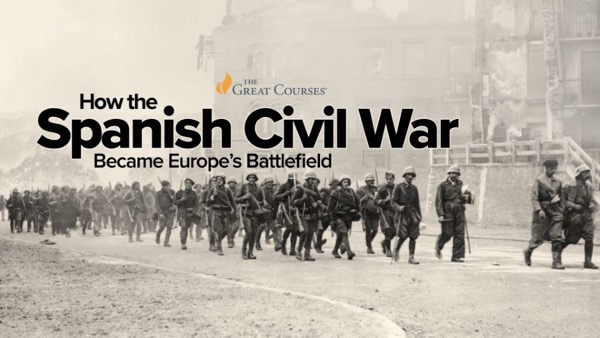


 Reply With Quote
Reply With Quote



